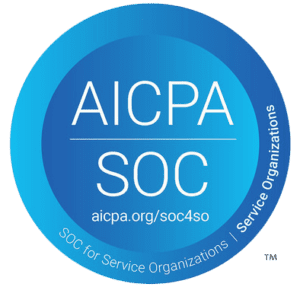Today’s advisor is facing greater pressure to deliver a high-caliber client experience. Given the increase in competition, especially digitally native solutions, advisors are continuously tasked with showcasing the value of their services and keeping their clients engaged.
Furthermore, the prospect of clients leaving to work with another more proactive, hands-on advisor has become commonplace in today’s market. In EY’s 2019 Global Wealth Management Research Report, they identified that nearly 40% of clients plan to switch providers within 3 years, and that “Personal Attention” ranked second in what clients value from their advisor.
In today’s post we’ll cover eight actionable strategies that high-performing advisors are using to engage clients, build stronger client/advisor relationships, and reduce instances of client attrition. For each strategy, we’ll spell out the action steps you must take to implement these high-impact tactics at your own firm.
1. Personalize outreach with the insights clients care most about
Modern, high-performing advisors are leveraging technology in new and exciting ways to engage clients with personalized insights that are highly-relevant to their unique positions and concerns. Contrary to the popular belief that a volume approach of client communications is ideal for engagement, it’s often not so much about the frequency of client touch points as it is about the value and impactful of those touchpoints for your clients. Top advisors understand that their clients care most about how information being shared with them relates to their specific goals and financial plan.
At Bridge, we’re helping advisors become better at engaging clients with highly-relevant personalized insights that build stronger advisor/client relationships. Users of Bridge’s practice management platform, Atlas, are able to pre-schedule monthly performance and account review touchpoints to go out to clients automatically. This functionality allows advisors to stay top-of-mind with clients and serve clients more proactively without putting any additional work on their plate.
2. Involve the next generation in planning conversations
The highest-performing advisors are making a concerted effort to engage their clients’ children into planning conversations. You could consider having a dedicated “next generation” planning meeting in which your client is encouraged or asked to bring their children along. One advisor suggests offering special or additional services to children based on your existing relationship with their parents.
3. Push yourself to continually deepen your understanding of client goals and desires
In all the focus on client communication channels, preparing for meetings, and day-to-day tasks, it’s possible to lose sight of what’s at the core of a successful client/advisor relationship. At the end of the day, a profound and sincere understanding of your client’s hopes, dreams, and goals is the most critical element to achieving quality financial outcomes for clients, ultimately engaging and retaining them.
Only once you deeply understand your client’s goals and dreams are you able to engage them and tailor your approach to their unique needs. An emerging best-practice is to leverage more thought-provoking conversations with clients during review meetings in order to gain a deeper understanding of their goals.
Bridge recently published a Complete Client Communications Guide which includes sample client questions to help you uncover client goals. Here are some examples of effective client questions:
- When you think about your future, what may be keeping you up at night?
- It’s a Monday morning 20 years from now, what are you doing?
- How much risk do you think you should be taking to achieve your financial goals and why?
- What would you be doing right now if you were financially secure and didn’t have to go to work every day to earn a paycheck?
- If you won $100 million, what would you do with it?
- If you were given one year to live, what would you do with your time?
4. Conduct a client satisfaction survey
Research indicates that 94% of advisors feel client feedback is crucial to their ability to perform, yet not all advisors are effectively leveraging client satisfaction surveys. Clients surveys not only create valuable data that you can take action on, they also show clients that you care and are invested in improving your level of service. Understanding both what a client likes and also what they dislike about the current service model can go a long way in building deeper trust and mutual understanding within the relationship, which are both critical for long-term advisor/client success.
Some sample questions you might ask your clients include:
- What is most important to you when it comes to an advisor/client relationship?
- What type of activities or communication do you value the most?
- Are you satisfied with the level of communication you receive or would you prefer more?
- What aspect of the current service level do you dislike, if any?
- What other areas for improvement do you see that would increase your satisfaction with my service?
Of course, conducting the survey itself is not enough to separate yourself as a truly engaging advisor––that’s only half the challenge. Even more important is what you do with that client feedback and how you take action on it. Putting together a continuous improvement plan and executing against it is a high leverage area for your business that will directly benefit your clients, make sure you have time for this work.
5. Check-in more frequently
In today’s demanding marketplace, clients are more at-risk than ever; an annual check-in simply is unlikely to be enough to satisfy the needs of most clients. For many clients, they may experience significant life events or shifts in long-term goals throughout the year. As their advisor, your job is to stay on top of these changing needs and offer sound advice and effective solutions for keeping clients on-track to meet their personal goals.
Advisors looking to better engage their clients should reject the status quo annual check-in and instead opt for quarterly, or even monthly, client touchpoints while consistently communicating an ‘open door’ policy as much as possible. Research has shown that the more frequent touchpoints clients receive from their advisor, the more confident they are in their financial plan.
Client touchpoints don’t need to be face-to-face meetings, as more and more advisors are opting for virtual meetings via video chat or even a simple phone call to check-in and see how your client is doing and if anything has changed on their end.
6. Provide greater access to information
Today’s clients are demanding a greater level of transparency and accountability than ever before. Top-performing advisors understand that greater access to information and visibility into plan performance can go a long way in building a deeper, trust-driven advisor/client relationship.
An advisor, ensure you’re leveraging reporting technology and a client portal that gives your clients the visibility they need to have peace of mind. Additionally, as mentioned earlier in this post, having more frequent touchpoints with your clients can also go a long way in making them feel they’re “in the loop,” and have a pulse on their progress towards their goals.
7. Transition away from benchmark chasing and towards goals-based reporting
With the exception of investment and performance management driven advising firms, most of today’s top-performing advisors are steering client conversations away from beating the benchmarks and day-to-day fluctuations and more towards long-term goals and progress towards client goals. In order to better engage clients, advisors are framing conversations around broader life goals and not limiting the dialogue strictly to financial planning. This viewpoint not only showcases to clients that you care about all aspects of their life goals and are helping them work towards those goals on every front, it embraces that the client/advisor relationship is about more than investments and products. Through engaging clients on this front, you can showcase your value as an advisor in helping your clients achieve goals and wellness across all areas of their lives. Additionally, this approach can help advisors mitigate client decisions that might be rash, and instead help them focus on long-term goals.
8. Have a clearly defined communications strategy/plan/schedule
Top-performing advisors understand the importance of having a well thought out client communications plan and sticking to that plan. One common pitfall advisors make when it comes to client engagement is launching a good-faith effort to increase client communication frequency, then quickly losing the momentum of those efforts. Spending time in your communication planning efforts to anticipate future roadblocks you may have will make them easier to overcome when you meet on.
The fact of the matter is that only consistent, impactful communication executed over a significant amount of time will yield a greater level of client engagement and tangible results for your firm. Advisors that have the most impactful communication strategies are those with a documented communications plan and calendar, holding themselves accountable to those assets.
In order to create an effective client communication strategy, it’s important to first understand what types of communication will be most impactful to your clients, and to then craft a schedule of ideal communication frequency. If you’re looking for help in building your plan, be sure to check out Bridge’s Complete Guide to Client Communications.


